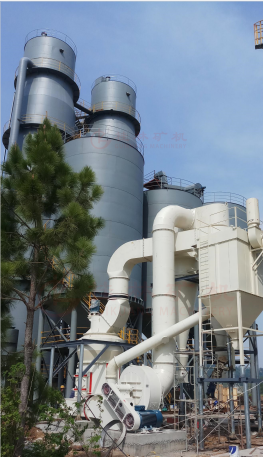Kaolin is an important nonmetallic mineral resource, which is a typical 1 ∶ 1 layered silicate mineral. The pure kaolin has high whiteness, soft texture, easy dispersion and suspension in water, good plasticity, high cohesiveness, and excellent electrical insulation performance; It has good acid resistance, low cation exchange capacity, good fire resistance and other physical and chemical properties. At present, kaolin has become an indispensable mineral material in ceramics, paper making, rubber, refractory and chemical industries. Guikuang Machinery is a manufacturer of kaolin grinding mill. Our kaolin Raymond mill, kaolin vertical roller mill, kaolin ultrafine mill and other kaolin deep processing equipment have been widely used in kaolin deep processing projects. The following is an introduction to the further processing of kaolin.
Deep processing direction I of kaolin: beneficiation and purification
The biggest feature of kaolin beneficiation process depends on the ore type. In practical application, it is difficult to obtain high-quality kaolin products by a single purification process, especially for processing low-grade coal series kaolin with large reserves in China and kaolin with complex ore composition
1. Less impurities: adopt simple methods such as drying, air separation and classification after crushing.
2. Many impurities: generally, gravity separation (desanding), magnetic separation (removing iron and titanium minerals) by high intensity magnetic separator or high gradient magnetic separator and superconducting magnetic separator, chemical bleaching (removing ferrous minerals and reducing trivalent iron to divalent iron), flotation (separating from aluminous minerals, such as alunite or removing anatase) and other methods shall be comprehensively adopted after dispersion and pulping.
3. Organic impurities: In addition to the above methods, screening after beating (except for plant fibers) and calcination (except for organic peat and coal) are also used.

There are two kinds of superfine grinding of kaolin: dry grinding and wet grinding. Dry method is mostly used for ultra-fine grinding of hard kaolin or kaolinite, and the product fineness is generally d90 ≤ 10 μ m. Most of the processing equipment adopts mechanical impact superfine grinding machine, ball mill, Raymond mill, vertical mill, etc. In order to control the particle size distribution of products, especially the content of the largest particles, it is often necessary to configure fine classification equipment. Wet process is mostly used for the superfine grinding of soft kaolin and sandy kaolin after desanding and impurity removal, especially for processing d80≤2μM or d90≤2μThe paper pigment and coating grade kaolin products of m are also industrially processed with hard kaolin or kaolinite d80≤2μM or d90≤2μThe superfine grinding method must be adopted for coating grade kaolin products of M.
The third direction of kaolin deep processing: modification process
1. Calcination modification: Calcination can remove carbon and improve whiteness. It is an indispensable process for mineral processing and a special processing method to improve the performance of kaolin. Calcined kaolin has the characteristics of high whiteness, small bulk density, large specific surface area and pore volume, good oil absorption, covering and wear resistance, high insulation and thermal stability.
2. Intercalation/stripping: Intercalation/stripping refers to the method to destroy the interlayer hydrogen bond of kaolin, expand its interlayer spacing, and finally achieve the separation between layers to obtain structural monolayer through mechanical and physical action, chemical reaction or combination of the two, so as to increase the activity and specific surface area of kaolin. There are various methods of intercalation, but no matter which method is used to intercalate kaolin, the use of intercalating agent is indispensable, and it needs to be realized by combining the changes of external mechanical force, microwave, ultrasonic, calcination and other conditions.
3. Coating modification: coating modification can be divided into two ways: metal oxide coating and organic coating. Common surface modifiers mainly include silane coupling agent, organic silicon (oil) or silicone resin, surfactant, organic acid and organic amine. It is worth mentioning that calcined kaolin coated with modified titanium dioxide in metal oxides has been widely recognized in the market as a substitute for titanium dioxide.












